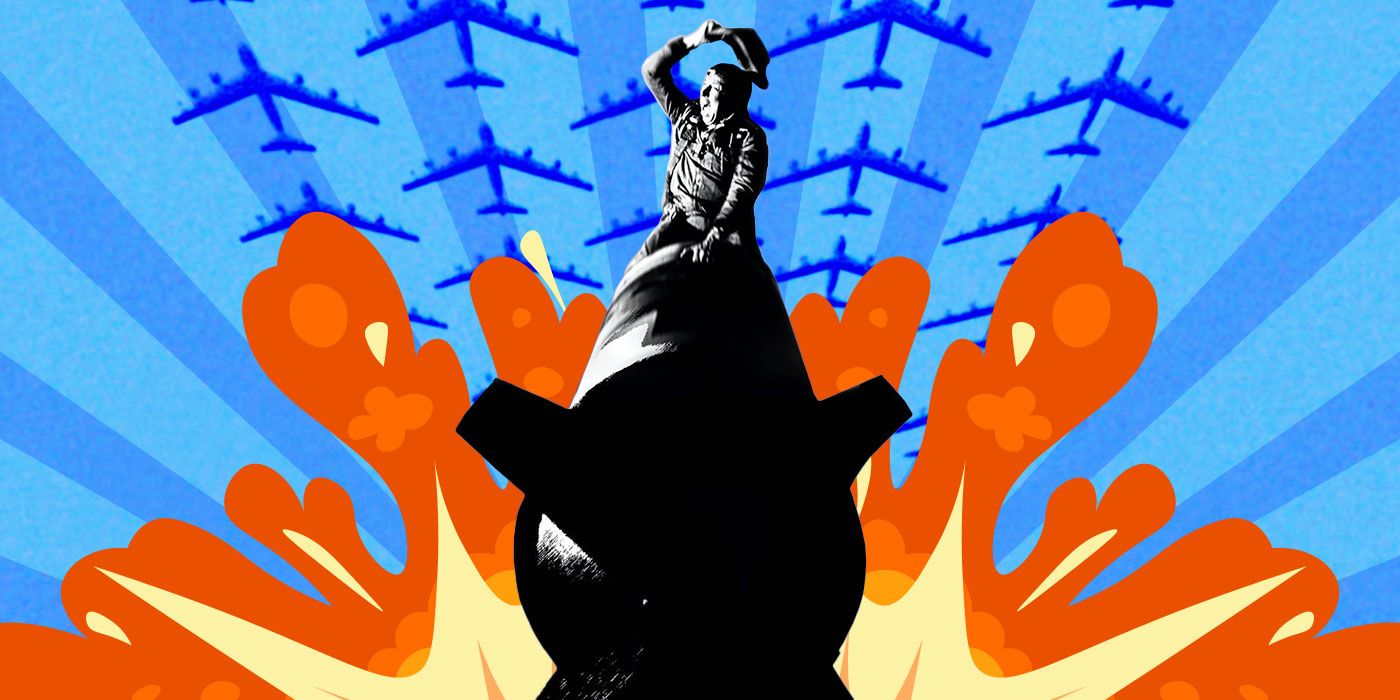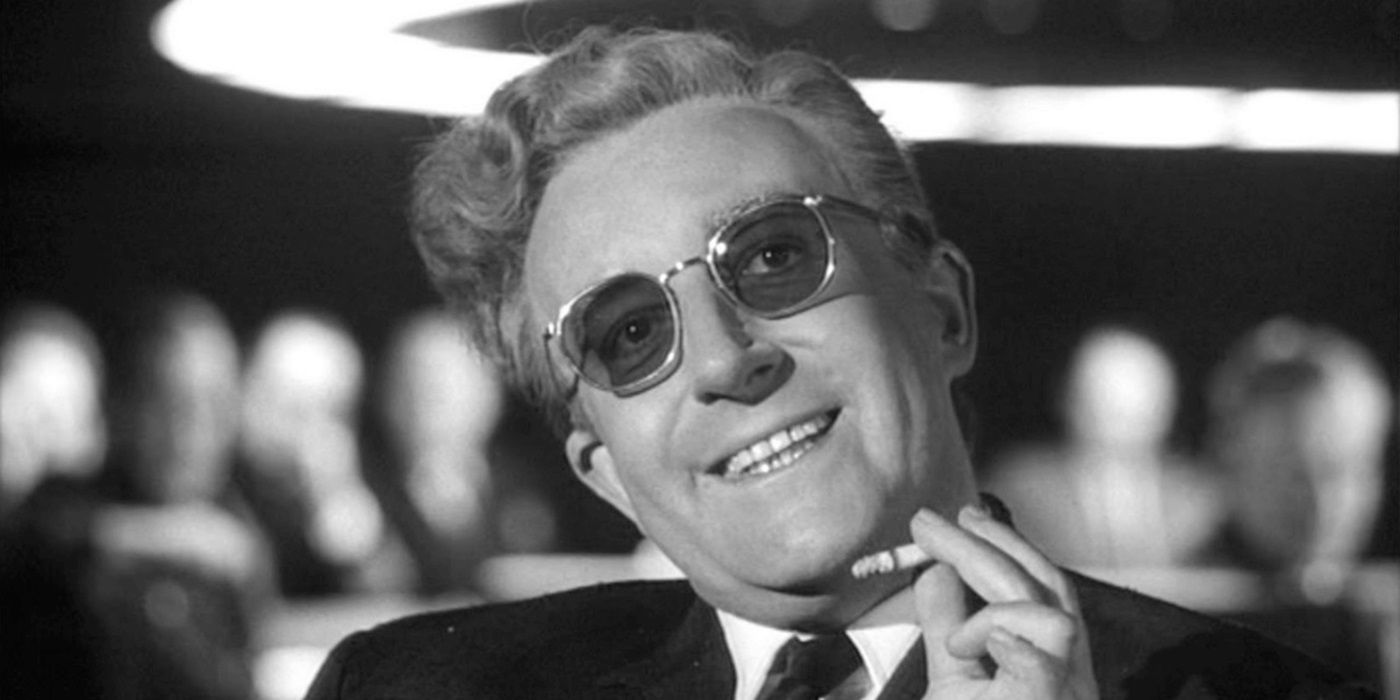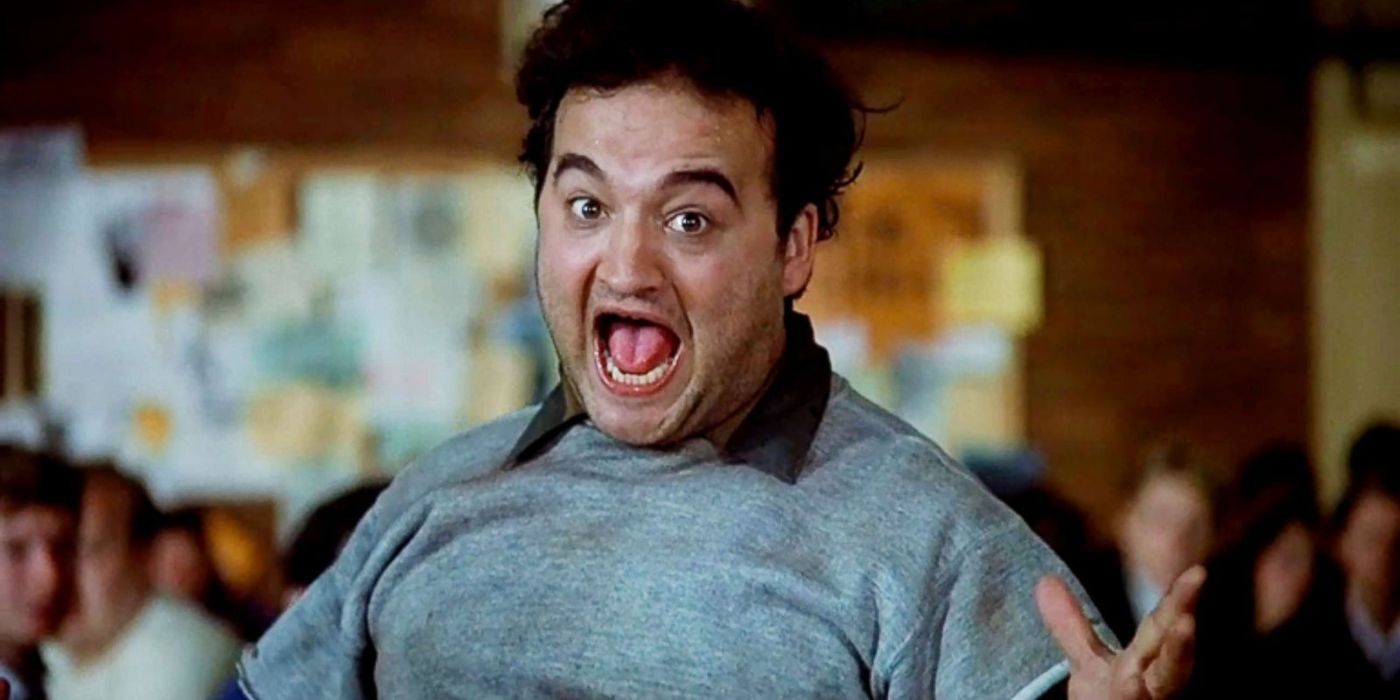The Big Picture
- Dr. Strangelove, a Kubrick classic, almost had a sequel planned with Terry Gilliam at the helm.
- Sequels to Kubrick films are rare, but the ambiguous ending of Dr. Strangelove left room for more.
- An exploration of what a sequel to Dr. Strangelove would entail, including populating the world and Nazi offspring.
Sequels and Stanley Kubrick are like oil and water, they just don’t get along. Kubrick is an undisputed master of cinema, with each entry in his filmography regarded as a beautiful piece of art, whole and complete. It took 40 years for The Shining to get its Dr. Sleep, and although a valiant effort by director Mike Flanagan, it certainly is distinctively not a Kubrick film. Flanagan’s movie is more of a cinematic adaptation of the Stephen King literary sequel than a cinematic follow-up to the original film. This is why it is surprising that Kubrick had a sequel, and a trilogy, in the works for Dr. Strangelove.
Dr. Strangelove
An insane American general orders a bombing attack on the Soviet Union, triggering a path to nuclear holocaust that a war room full of politicians and generals frantically tries to stop.
- Release Date
- January 29, 1964
- Director
- Stanley Kubrick
- Runtime
- 95 minutes
- Main Genre
- Comedy
- Writers
- Stanley Kubrick , Terry Southern , Peter George
How ‘Dr. Strangelove’ Set Up a Sequel
Dr. Strangelove is widely regarded as one of the greatest anti-war movies of all time. It is a razor-sharp satire that sees a military base run amok during the Cold War. Peter Sellers takes the lead playing multiple characters, including the titular character – a Nazi scientist with a case of Alien Hand Syndrome. The film is a baroque satire of war and a dark reflection into a post-nuclear world where paranoia is the rule. The film, of course, revolves around a pre-emptive nuclear strike on Communist Russia at the behest of United States Air Force Brigadier General Jack D. Ripper (Sterling Hayden), the commander of Burpelson Air Force Base who has taken control of the fleet of B-52 bombers that are all armed with hydrogen bombs. The President of the United States, Merkin Muffley, also played by Sellers, hatches a plan with His Joint Chiefs Of Staff to stop Ripper. Enter Sellers, again as Strangelove, the president’s paraplegic nuclear advisor, to help save the day.
At the end of the film, while sitting in his wheelchair, the enigmatic Dr. Strangelove attempts to assuage the Joint Chiefs of Staff of their fears about the nearly imminent end of the world. Their worried and solemn faces, so tormented with their bungling, look ironically at a nazi scientist for guidance. Strangelove offers a pragmatic answer to their fears. Firstly, he suggests that the President and several hundred thousand men retreat to underground mines where they will be safe from the radiation. He then suggests an outrageous 10:1 female-to-male ratio. The idea, of course, is that they will need to re-populate the planet after the radiation subsides and that a breeding program would be needed. When the president agrees to Strangelove’s plan, he leaps off his chair, exclaiming “Mein Führer, I can walk!” The President and his men are shocked at the revelation. The film ends with montages of explosions as nuclear hell tears the world apart. “We’ll Meet Again” sweetly plays over the carnage, and we are left to sit with the finality of it all…or are we?
Stanely Kubrick Planned to Pass the ‘Dr. Strangelove’ Torch to Terry Gilliam
It’s hard to imagine, but despite the finality of those final scenes, a sequel was in the works. In 1995, Kubrick enlisted the help of screenwriter, and original film co-writer Terry Southern, to pen a sequel to the film, called Son Of Strangelove, with Terry Gilliam in mind to direct, according to IndieWire. Gillam, apparently, never knew about it, though. Gillam had this to say about the revelation, “I was told after Kubrick died — by someone who had been dealing with him — that he had been interested in trying to do another ‘Strangelove’ with me directing. I never knew about that until after he died, but I would have loved to.”
After Southern passed away, his literary archives were transferred to the library post-humorously in 2003. Among them were Southern’s notes about two Dr. Strangelove sequels, seemingly confirming initial plans for a trilogy. In 2003, the New York Times reported that notes and index cards for the intended sequels had the working titles Turgidson’s Mother and Into the Shaft! And Muffley Strikes Back. The majority of the plot details remain a mystery. There is a glimmer of hope, though, as according to Southern’s notes, the sequel was said to take place inside a series of underground bunkers where Dr. Strangelove has taken refuge with a group of women. This would, of course, mesh with the final plot points of the original film.

‘Dr. Strangelove’ Had a Delicious Alternate Ending
Who wants some pie?
‘Dr. Strangelove’s Original Ending Left Room for Sequels
With the movie’s ambiguous ending, the cuts to the explosions do not reveal the time at which the bombs dropped. This allows the interpretation that Dr. Strangelove would have made to the underground mines with the present, allowing room for more stories to develop in planned sequels. What would a nazi do if allowed to repopulate the world? Although the films will never see the light of day, it is a fascinating look into the mind of the brilliant director. Interestingly, Son Of Strangelove was the working title given to another famous Kubrick film, 2001: A Space Odyssey, which co-writer Arthur C. Clarke saw as an extension of the original Strangelove film.
In Thomas Allen Nelson‘s book Kubrick: Inside A Film Artist’s Maze, Clarke says that he saw the film “as an extension of Kubrick’s previous film and intended to emphasize terrestrial themes in which nuclear bombs orbited the Earth only to be detonated by the Star-Child in the act of cosmic purification… but Kubrick steered the film version… toward an emphasis on mythic journeys and transformations.”
While it is unusual to think of a sequel to any Kubrick film, it would seem that there is at least room for it concerning Dr. Strangelove. Kubrick’s films are indeed world’s unto themselves, and Clarke reemphasizes the fact that the films are separate stories that have distinct themes that they explore. This is why Kubrick steered 2001: A Space Odyssey away from Clarke’s vision of an interstellar sequel. However, the idea that plans for sequels existed begs the question – what would Dr. Strangelove’s son have been like in that new world with an opportunistic nazi father? What would that say about the future of humanity? Any further attempt to figure out the themes of this sequel drifts further and further into speculation, but what is certain is that it may encourage viewers to rewatch the film with new eyes.
Dr. Strangelove is streaming on Prime Video in the U.S.
Watch on Prime Video




